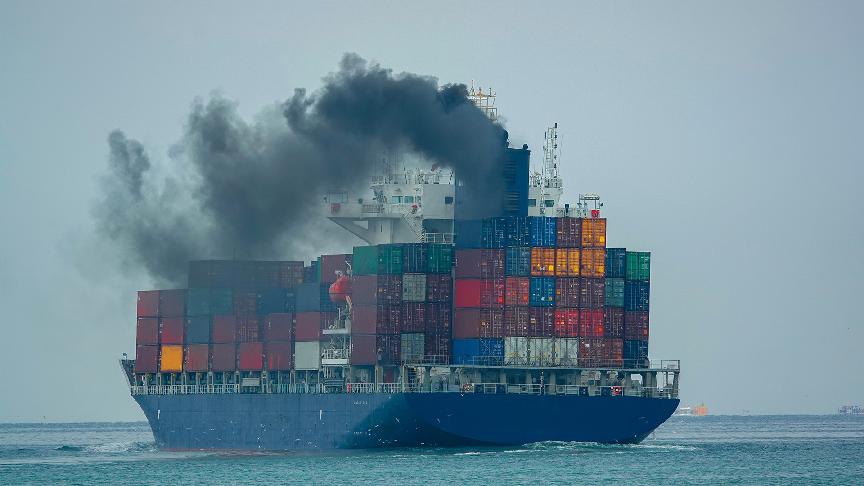4 October 2024 (Lloyd's List) - BACK in 2018, before Covid skewed the data, various studies estimated that around 11% of the world’s population were travelling by air, and only 4% were taking international flights.
Within that very limited and affluent demographic, the most frequent fliers — at most 1% of the world population — likely account for more than half of the total emissions from passenger air travel. And that’s before you start to look too closely at the 4% of total aviation emissions attributed to private flights, 75% of which are registered in the US, which are not covered under the various carbon offsetting schemes in train.
All of which is merely context to consider when assessing the usual political hemming and hawing about how taxation of international aviation and shipping are really very complex indeed.
International taxation policy is of course difficult by its very nature. But it is not inconceivable that a progressive, targeted taxation of the affluent demographic fragment of private jet frequent flyers is beyond the wit of national governments to sell to their voters as an uncontroversial step in the right direction.
Once you have sold the narrative that paying a fair price to account for the carbon you are emitting, it’s less of a leap to challenging the fundamental economics of aviation and questioning whether ever bigger airports are really adding value to our economies.
Narrative is important when it comes to policy.
Aviation is still routinely twinned in the minds of governments. Too many are of the opinion that maritime policy can be dealt with by copying and pasting the work they have done in the skies and transferring it to water.
The fact that the maritime sector is outpacing its aviation peers in the race to secure a workable decarbonisation policy framework is too often overlooked.
As is the relative complexity of dealing with a significantly more fragmented series of interlinked sectors driven very different fundamental economics.
But pointing out the laggardly ways of the regulatory flyboys and girls is, understandably, not the narrative that the International Maritime Organization is pushing right now.
The detail and complexity of the debate within the IMO right now defies glib headline assessments.
The secretary-general is sticking to the script that they are on track to deliver the measures that will, ultimately, form the architecture of shipping’s decarbonisation ‘pricing mechanism’. The fact that he won’t publicly use words like ‘tax’ or ‘levy’, lest he upset the diplomatic semantics holding this debate together, speaks volumes of the delicate nature of this debate.
The fact that the Marine Environment Protection Committee’s 82nd meeting has concluded with a large amount of work remaining, but most important options still on the table, can be taken as a win.
As the last major meeting before the expected approval meeting in April 2025, this week was never about concluding key policy design elements. The nature of negotiation strategy is to hold out and accept compromise only when forced to do so as late towards the final decision as possible.
This week was essentially a litmus test of how far governments are going to be prepared to move before they show their hand and we work out who wins and who loses.
Based on the interminable drone of impenetrable IMO speak this week, the delegate whisperers at UMAS have assessed that the room is significantly in favour of a levy. If member states voted as per the positions expressed during the last two weeks of debate, they reckon 76% would now be opting for a levy — more than sufficient to force through an amendment to the Marpol Annex VI regulations.
But that’s not what is needed. A workable consensus is the best chance the shipping industry has to meet the IMO net zero GHG emissions target by or around 2050.
Achieving that is now a question of haggling, and that’s all about the narrative.
The fact that food security become the hot topic at this late stage in the negotiations was entirely predictable. This is about how transport cost increases that result from the policy measures will create negative economic impacts, particularly on low-income countries. The detailed proposals here are something of a sideshow — this is about extracting the best possible deals in terms of climate financing or ‘out of sector revenues’ as the debate has it.
How far African states and Small Island Developing States move is now a hugely influential swing factor on the industry’s ability to decarbonise.
What happens between here an ultimate agreement is about selling the right narratives domestically to national governments, internally to the IMO member states, and externally to the wider public and the swirling morass intergovernmental bodies to whom aviation and shipping are barely a second thought in the wider energy transition problems yet to be tackled.
Consensus is an ugly process and the likely best outcome here is that everyone is prepared to be equally disappointed with the end result that can actually be implemented.
If that happens the IMO has a chance to move forward and avoid the existential crisis of regional policy that will undoubtedly follow if they fail.
Pointing out that their policy is slightly ahead of aviation’s won’t cut it.







